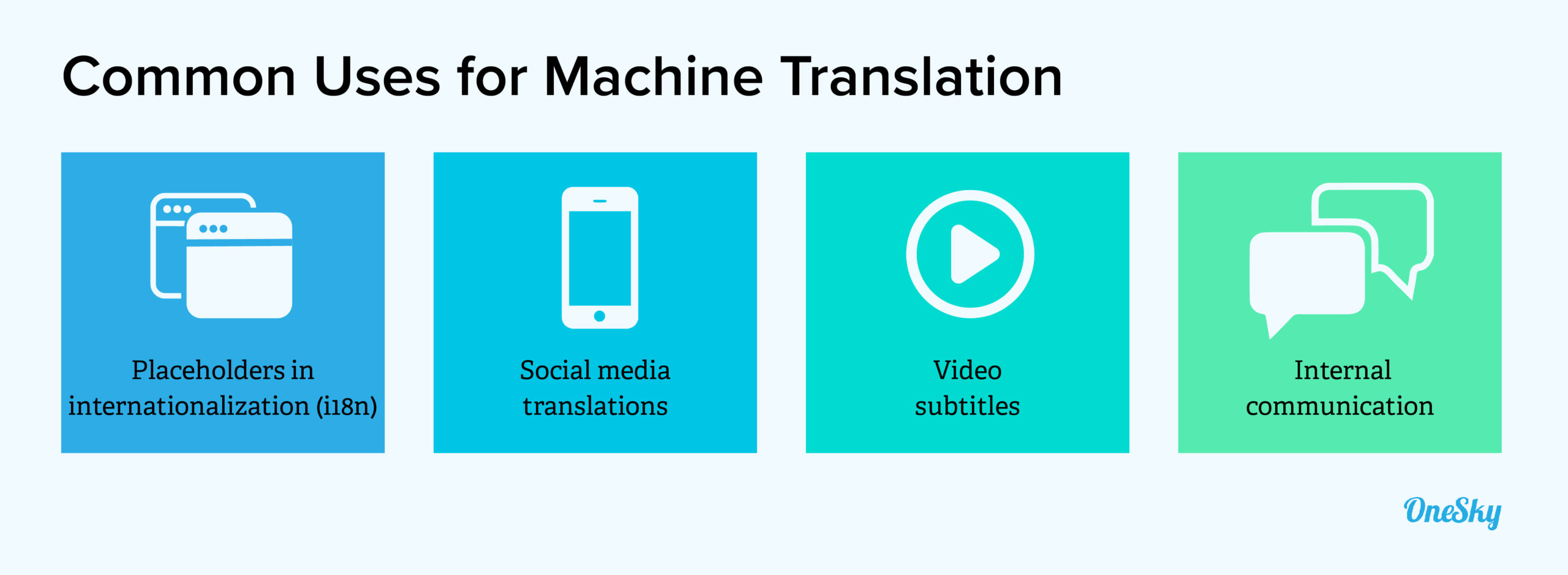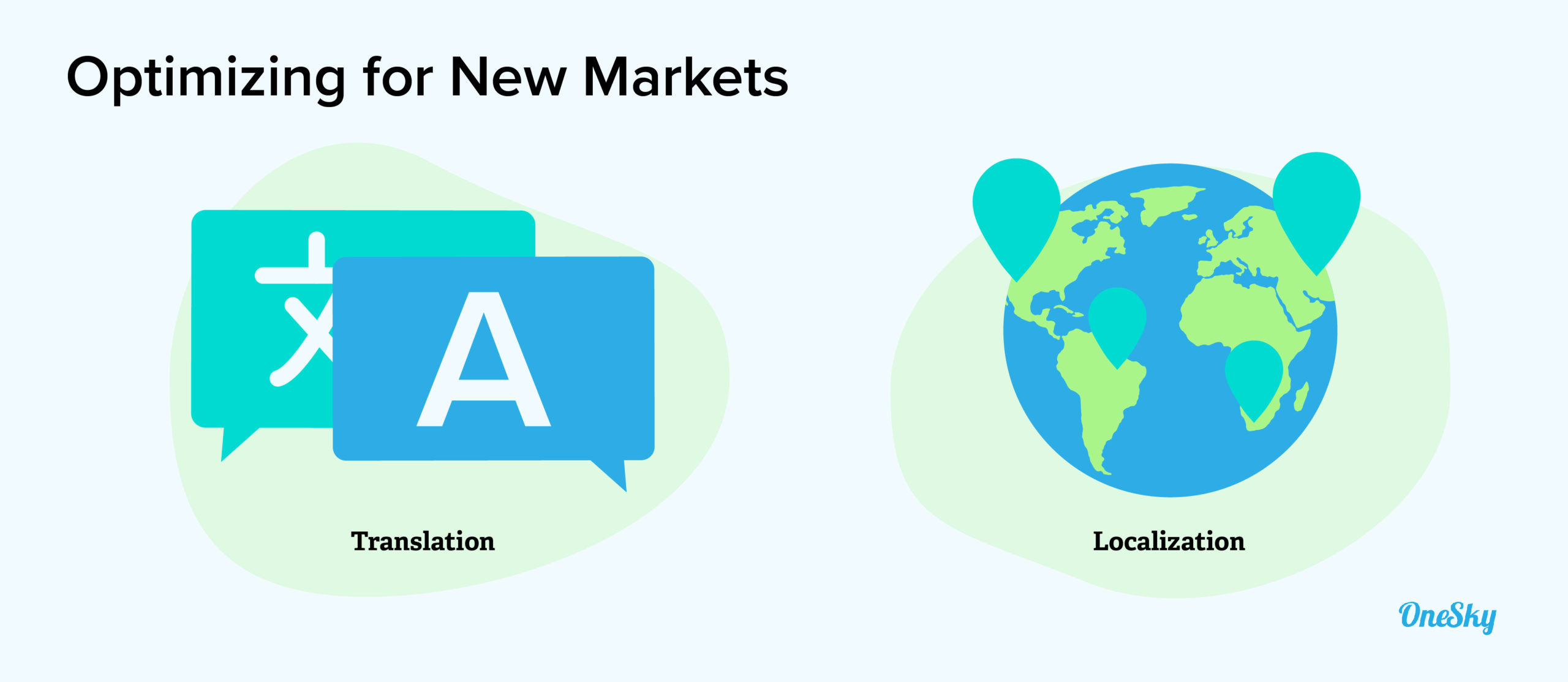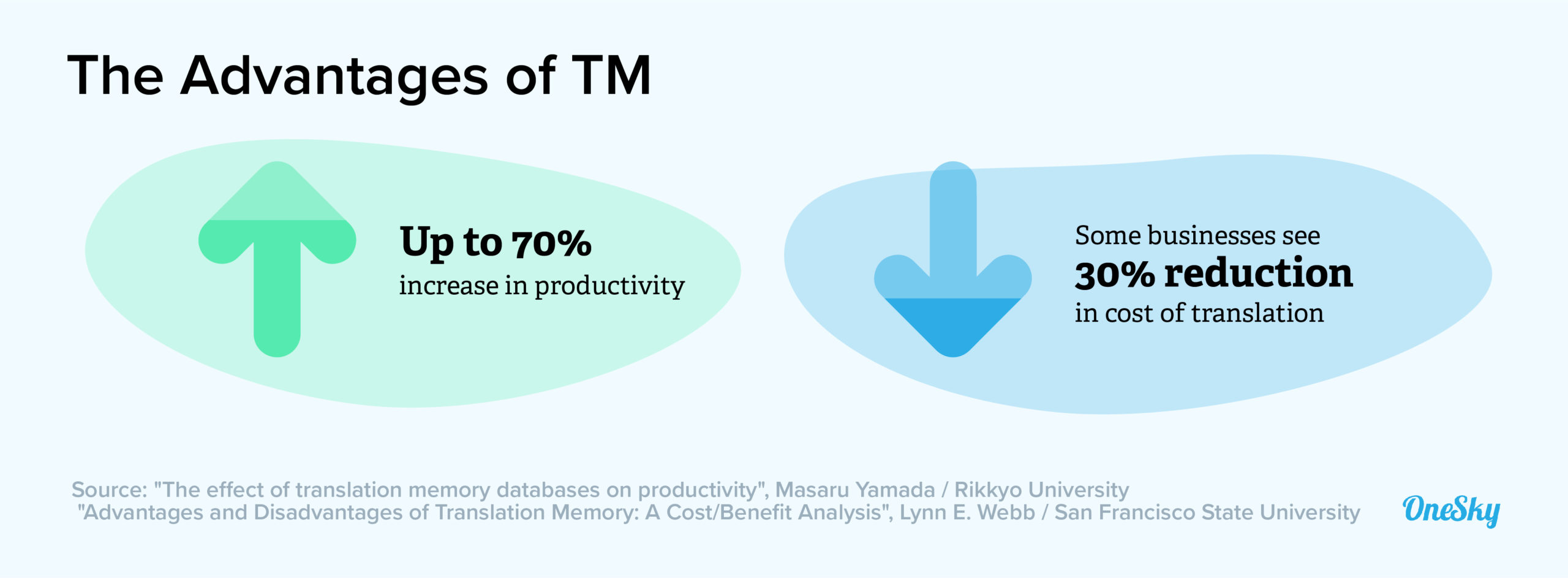3 Types of Website Content Translation Services
Whether you have products to sell or a message to spread, publishing content online allows you to reach a worldwide audience. However, the majority of users across the globe will not understand your native language — even if it happens to be English. The solution? Translate your content into different languages. Website content translation is now more accessible than ever, thanks to automated tools and a wide selection of professional agencies. To help you choose the right solution for your translation needs, we’re taking a closer look at all the different types of website content translation services.
Machine Translation: The Fast, Budget-Friendly Option
As the name implies, machine translation is a content translation process that is entirely conducted by software.
The most well-known example of machine translation is Google Translate. This automated tool uses machine learning algorithms to convert text from one language to another at lightning speed.
The changeover is not always perfect, but users get a fairly good sense of what the original content was talking about.
Google Translate is mainly a content translation tool for consumers wanting to access content in other languages. Other forms of machine translation are optimized for different requirements — such as translating entire websites. Examples include Amazon Translate and IBM Watson Language Translator.
These paid-for content translation services tend to offer more accurate translations than Google Translate. Many such apps can be integrated with your chosen CMS via an API or a plugin, and they can handle vast amounts of content.
In comparison to professional translation services, machine translation is super affordable. It’s also very fast, and it requires no human input.
These characteristics make machine translation well suited to user-uploaded content. You know the “translate” option next to comments posted on social media? That is powered by machine translation.

On the down side, machine website translation cannot match the accuracy of a professional translator. This is mainly due to context; humans are simply better at understanding the intention of the author.
As such, we recommend using machine translation for one of two purposes: translating user-generated content, or creating placeholder translations during the design phase of building a localized website.
Examples: Google Translate, Amazon Translate, IMB Watson Language Translator
Features: Instant, affordable, easy to integrate
Best for: User-generated content, placeholder text
Translation Agencies: Human Translation for Better Accuracy
For everything other than user-generated content and placeholder text, professional website translation services are usually a better option. Leveraging human translation is simply much more accurate than any automated process, and the translated content often feels more fluent and natural to native speakers.
Translation agencies are businesses that give you access to professional translators.
Some operate only as a matchmaker between you and a network of skilled translators. The working relationship is managed by the agency, but you are essentially working with a freelancer.
In other cases, agencies deliver a more full-package type of website or content translation service. These outfits have a similar network, but they employ freelancers to complete the work.
The biggest names in this space offer to cover any translation task. However, smaller agencies (which are more common) will often specialize in translating particular types of content, or bring knowledge of specific industries.
Using an agency is a good idea if you have a one-time project, like translating a static web page. Good agencies deliver high-quality translations, at a relatively affordable price.
Agencies are less well suited to handling a constant stream of new content, and the quality of work may vary. In addition, your translation agencies won’t help you with localizing your website for foreign markets.
Examples: Tomedes, Ecrivus
Pros: Good translation quality, fairly affordable
Best for: Website translation projects with a limited scope
Language Service Providers: More Than Translation
Offering a step up from agencies, language service providers (or LSPs) go beyond simple word-for-word content translation.
You see, translating content is only the first step towards making your website more attractive to people in other regions. To provide a truly compelling user experience, you need to embrace full website localization. A language service provider can help with that.

LSPs usually employ professional translators with experience and certifications. These individuals will not only translate your content, but they can also adapt it to seem more natural to native speakers. Plus, the translations tend to be top quality.
That isn’t the only reason why you might want to use a language service provider. Many such solutions include a translation management system, or TMS. This kind of tool makes it easier to order translations and manage multiple languages.
As with agencies, some LSPs are generalists while others are specialists. Choosing a business that is “digital native” should be your priority; for website translation, you need professional translators who understand SEO, e-commerce, and other key topics.
Overall, LSPs are your best option for translating and localizing your websites to the highest standard. The only downside is the higher price involved — and using an LSP might feel like overkill for the smallest projects.
Pros: High-quality translations, localization options, TMS
Best for: Translating and localizing full websites
OneSky: The Best of All Worlds
Much like some LSPs, OneSky offers access to high-quality professional translation. You can also use machine translation, if you prefer.
The major point of difference in these types of website translation services is in the workflow.
With a standard LSP, you have to export content from your website for translation, and upload the files to your chosen provider. With OneSky, the process is much easier.
Our end-to-end platform can grab content from your website automatically, via a dedicated API. This makes the process less time consuming, particularly when you need to make regular content updates.
With your content uploaded, OneSky operates as a powerful translation management system. The online app has translation memory to cut down on repetitive tasks, and a glossary for industry-specific terms. In addition, you can easily manage multiple versions of your content.

OneSky has over 1,000 professional translators and localization experts available to work on projects. These experts have extensive experience of translating content for digital platforms — including websites, apps, games, and online stores.
Along with translation, you can get full localization support, proofreading, and on-device testing.
Once you are happy with your translated content, you can send it straight back to your website via the OneSky translation API. Alternatively, you can download the content in a range of formats.
In combination, these features help you to deliver a great user experience and earn the trust of customers in 50 languages — without a significant investment of your time or money (prices start from $0.04 per word).
Don’t want to work with an API? OneSky also supports over 35 file formats for import and export, including HTML, PHP, TXT, MD, and more.
Pros: API-based workflow, powerful features, high-quality translations, extra services, support for 50 languages
Best for: Translating and localizing websites to a high standard
Choosing the Right Solution for Your Content Translation Needs
All the solutions mentioned above have their strengths. So, how do you choose between them? The key is finding the option that best fits your needs.
Here are some important factors to consider when making your decision.
Quality
Machine translation is fine when you need automation. However, it can diminish the quality of your web content. If you want your translations to be as good as the original content, you should be looking at professional translation.
Content
Most websites include several different types of content, from blogs and product pages to video and interactive elements. When choosing a solution, check whether your provider supports all the different content types in your translation project.
Translation Management
For one-off projects, exporting and integrating by hand are fine. But if you want a multilingual website with frequently updated content, it’s important to find a solution that offers translation management features. It will save you time in the end!
Workflow
If you work with an agency, they may require you to deliver original content in specific file formats. Machine translation platforms and LSPs tend to be the most flexible, and OneSky offers the simplicity of an API.
Extra Services
To make your website truly user-friendly in new markets, you need a lot more than simple translation. While machine translation tools and agencies usually provide basic translations, LSPs and OneSky offer complete localization. OneSky also offers translation reviews and on-device testing.
Pricing
In the end, your choice will be dictated by your budget. Machine translation is the cheapest option available; agencies are usually more affordable than LSPs, but this is not always the case. OneSky is somewhere in the middle.
Why You Should Pick OneSky for Website Content Translation
As we mentioned, there is no one-size-fits-all solution in terms of website content translation services. However, there is a product that should cover all of your needs — whatever they may be.
As used by the likes of Shopify, Airbnb, Grab, and Hubspot, the OneSky platform provides the ideal workflow for any website translation or localization project.
The platform gives you access to machine and professional translation for all types of online content, with powerful translation management features and an API-based workflow. Plus, it has a rating of 4/5 stars on G2 and Getapp.
Want to give it a try? Sign up free to take OneSky for a spin!



 Written by -
Written by - 




 Written by
Written by 


